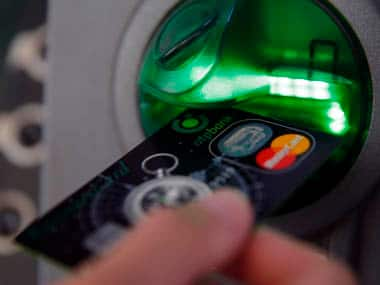Using a debit or credit card to shop is so common place now. In fact, it is easier to use these cards at a merchant establishment, or point of sale (POS) terminal, than using them for online shopping. At a POS, all you have to do is give your card to the merchant, which he swipes over an electronic data capture,or swipe machine. The machine pushes out two slips: one you get to keep and the other you need to sign and hand over to the merchant. The merchant verifies the signature on the slip and the signature at the back of your card and hands you the card. Easy. But that’s where things can go wrong. To know more, read on.
Picture this: You get your savings bank account statement and realise that there’s a transaction you don’t recognise. You inform the bank that this was an unauthorised transaction done against your debit card at a POS terminal, and you have not shared your card with anyone for that purchase. The bank refused to honour claim for a reversal of the transaction, because Visa rejected the bank’s claim, technically called a charge-back.
[caption id=“attachment_1134899” align=“alignleft” width=“380”]  A customer performs a transaction on an ATM. Reuters[/caption]
If you thought this is an imaginary situation, it is not. This happened for real and is cited in an RBI document. After several requests to the bank to reverse the transaction fell on deaf ears, the customer finally approached the banking ombudsman (BO). The ombudsman further investigated the matter and found out that neither the name nor the signature on the transaction slip were those of the customer, and did not match the debit card of the customer. “It was concluded that due care was not taken by the concerned parties while accepting/making payments through the cloned card. Further, a direct debit in the account had taken place on the basis of account number only, even though the name was different. In view of the above deficiencies and the fact that the card was in the possession of the complainant, the benefit of doubt was given to the complainant,” the RBI document said.In fact, the BO directed the bank to reimburse the disputed amount to the customer.Ideally, the merchant should have verified the signature on the back of the debit card, with the signature on the transaction slip. But clearly he failed to do so, and the customer became a victim of fraud.
What we can learn: The customer had a strong case in this incident because the signature on the transaction slip did not match the signature on the back of the debit card. Now, this takes us to a mistake we all commit knowingly or unknowingly. How many times have you scribbled your signature carelessly on the transaction slip after making a card payment? Very often, right? The thinking probably is that it is not a big deal. But it is, as the aforementioned instance illustrates. If that customer’s signature was inconsistent in the past, the bank could have argued that habitually his signature has never matched his original and hence the signature on the disputed charge sheet was his own. In order to avoid such circumstances, do your bit. Take care to put your signature properly on transaction slips.


)
)
)
)
)
)
)
)
)



